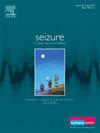Establishing essential clinical data elements for efficient epilepsy care in time-limited settings
IF 2.7
3区 医学
Q2 CLINICAL NEUROLOGY
引用次数: 0
Abstract
Purpose
We aimed to develop a core set of common data elements (CDEs) for routine epilepsy care to enhance consistency and efficiency within time-limited clinical environments.
Methods
We employed a modified Delphi method involving epileptologists from university-affiliated hospitals. Participants rated the feasibility and importance of proposed CDEs over three survey rounds. The primary objective was to create feasible CDEs for EHR integration that capture essential clinical information during 5–10-minute consultations. Participant feedback guided iterative refinements, culminating in two templates: follow-up notes and initial/periodic evaluations.
Results
Of the 68 invited epileptologists, 61 (89.7 %) participated. In Round 1, consensus (≥67 % agreement) was achieved on 5 of 6 CDEs for follow-up notes and 22 of 28 for initial/periodic evaluations. After three rounds, consensus was reached on 6 follow-up note CDEs and 20 initial/periodic evaluation CDEs, including seizure frequency, date of last seizure, and medication changes. Most participants endorsed the necessity (98 %) of clinical CDEs and intended to implement them (97 %).
Conclusion
These core CDEs provide a practical, consensus-based framework for standardizing epilepsy care in South Korea under short consultation constraints. They can improve consistency and quality of care across institutions. Future initiatives will expand the CDEs to other patient subgroups, integrate patient-reported outcomes, and embed the templates in EHR systems for clinical and research applications.
建立必要的临床数据元素,以便在有限的时间内有效地治疗癫痫。
目的:我们旨在为常规癫痫护理开发一套核心通用数据元素(CDEs),以提高时间有限的临床环境下的一致性和效率。方法:采用改进的德尔菲法对大学附属医院的癫痫医师进行调查。与会者在三轮调查中对拟议的可持续发展政策的可行性和重要性进行了评级。主要目标是为EHR整合创建可行的cde,在5-10分钟的会诊期间捕获重要的临床信息。参与者的反馈指导了迭代改进,最终形成两个模板:后续笔记和初始/定期评估。结果:68名特邀癫痫病医师中,61名(89.7%)参加了本次活动。在第1轮中,随访记录的6个cde中有5个达成了共识(≥67%的一致性),28个初始/定期评估的cde中有22个达成了共识。三轮后,对6例随访记录CDEs和20例初始/定期评估CDEs达成共识,包括癫痫发作频率、最后一次发作日期和药物变化。大多数参与者赞同临床CDEs的必要性(98%),并打算实施它们(97%)。结论:这些核心CDEs为韩国在短时间会诊限制下规范癫痫护理提供了一个实用的、基于共识的框架。它们可以提高各机构护理的一致性和质量。未来的计划将把cde扩展到其他患者亚组,整合患者报告的结果,并将模板嵌入到EHR系统中用于临床和研究应用。
本文章由计算机程序翻译,如有差异,请以英文原文为准。
求助全文
约1分钟内获得全文
求助全文
来源期刊

Seizure-European Journal of Epilepsy
医学-临床神经学
CiteScore
5.60
自引率
6.70%
发文量
231
审稿时长
34 days
期刊介绍:
Seizure - European Journal of Epilepsy is an international journal owned by Epilepsy Action (the largest member led epilepsy organisation in the UK). It provides a forum for papers on all topics related to epilepsy and seizure disorders.
 求助内容:
求助内容: 应助结果提醒方式:
应助结果提醒方式:


